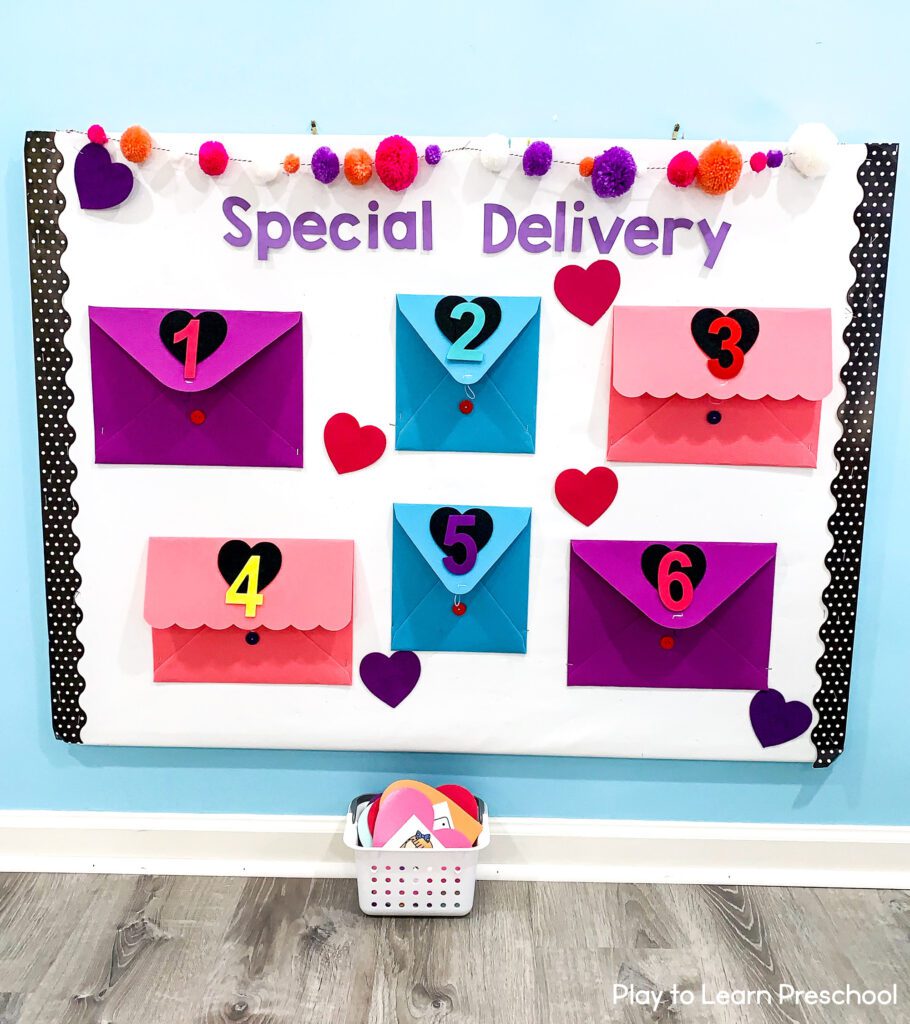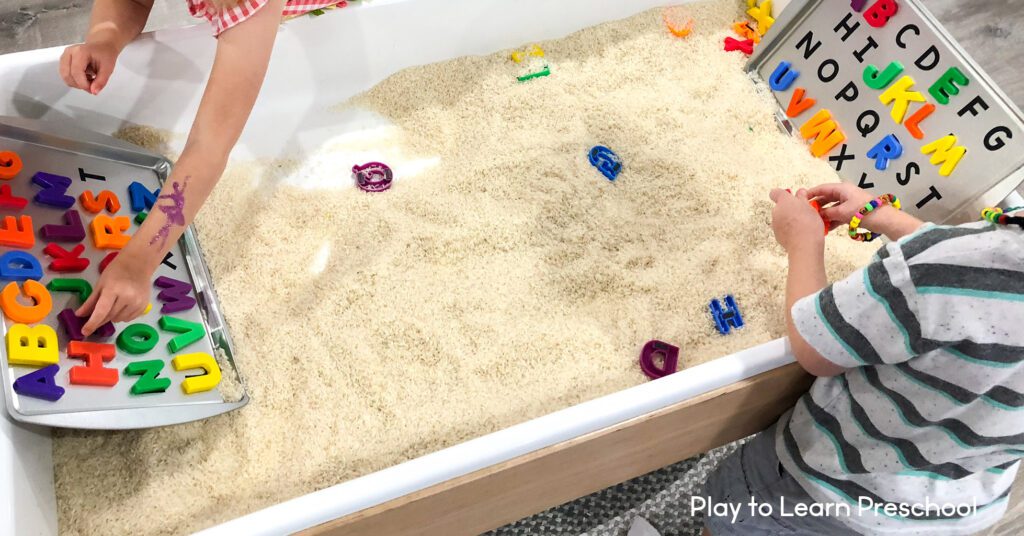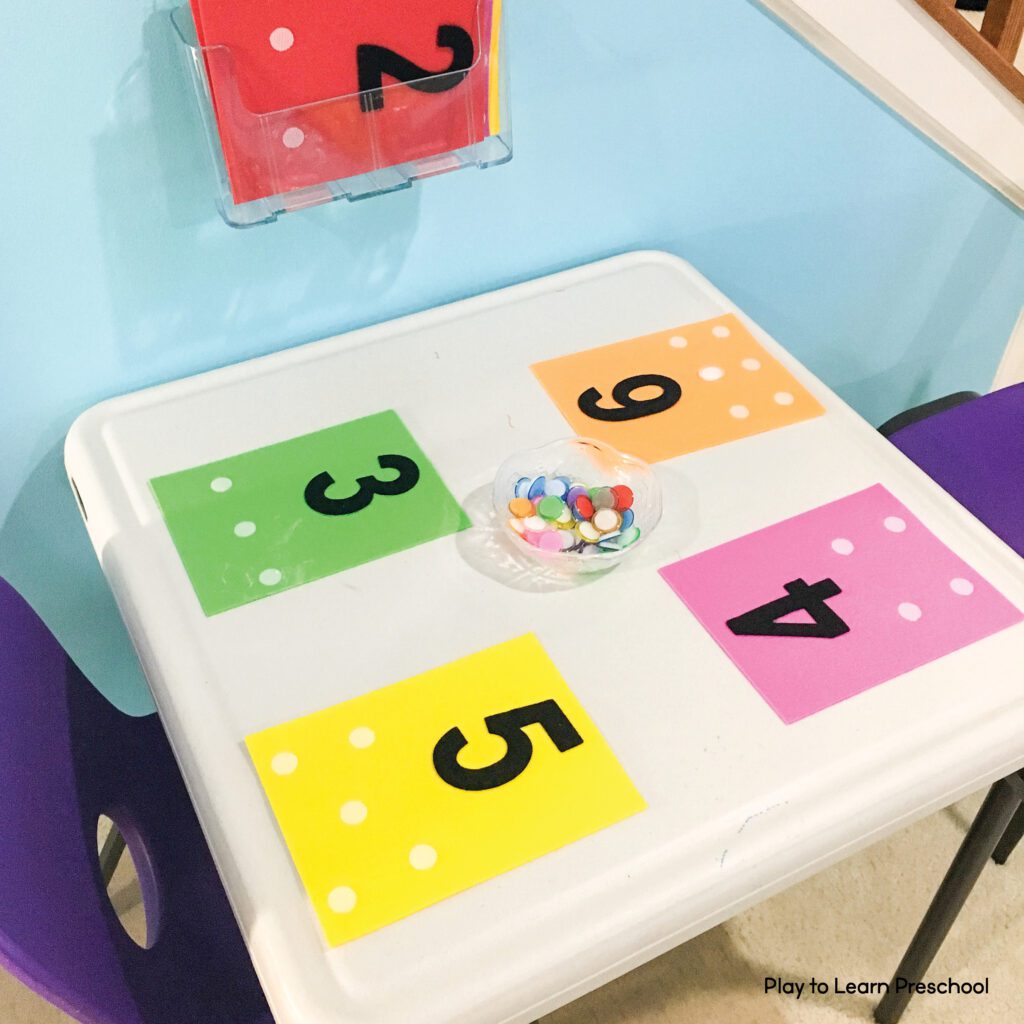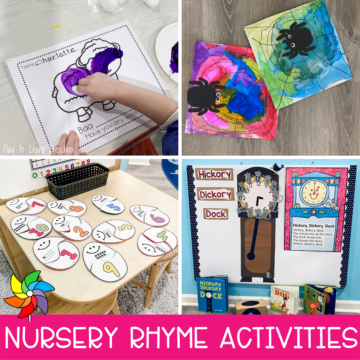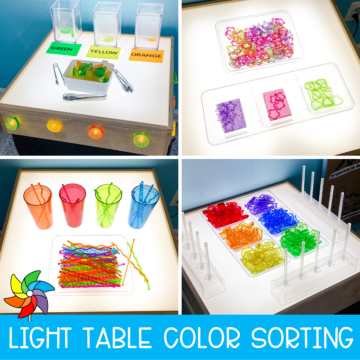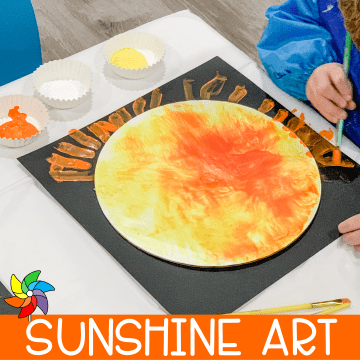Preschool students will love learning and practicing their numbers using these geoboard number templates at the mat center. Simply print, provide geoboards and rubber bands, and students are ready to go!
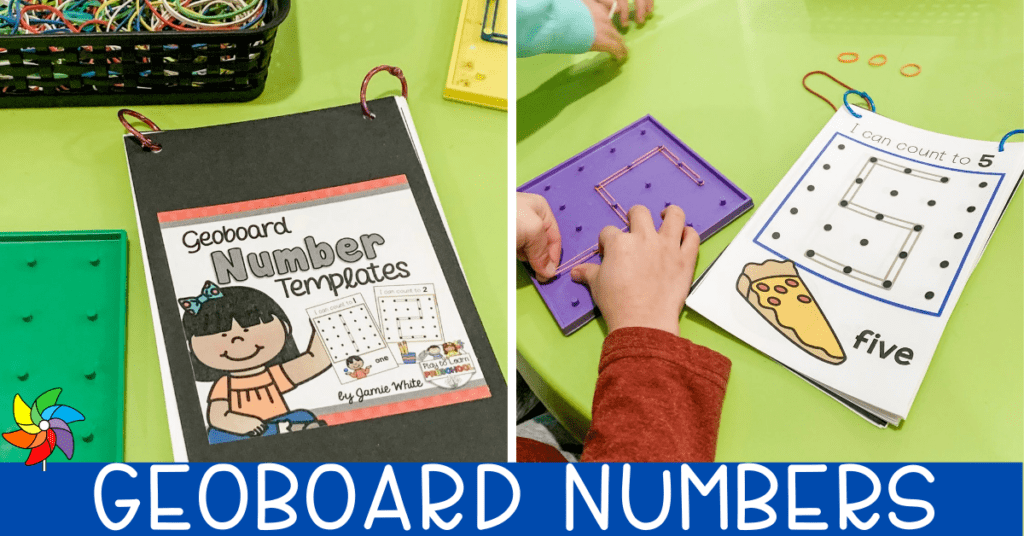
Benefits of using Geoboard Number Templates
Geoboards are a staple in early childhood classrooms. Made up of a plastic square with evenly spaced pegs, it serves various purposes. Students can practice making shapes, mimicking patterns, and even practice numbers and letters. Additionally, students practice using the small muscles of their hands to manipulate and place rubber bands on the pegs. So much learning from one little center!
Get a set of Geoboard Number Templates for your classroom here!
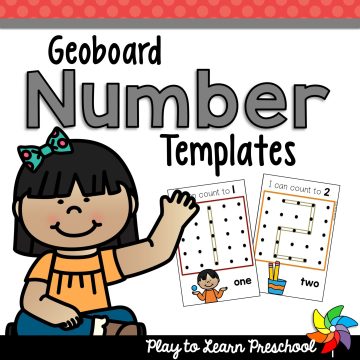
Geoboard Numbers
$3.00Combine counting practice, number identification, and fine motor skills with these Geoboard Numbers templates. Each one can be laminated and placed in your math center for a quick and easy learning activity.
Learning Numbers through Play
Identifying numbers and discerning one number from another is an early math skill. Preschool students need practice in how the lines are formed and how the written number connects to a specific quantity. Some ways to help students practice these skills are:
- Matching games – Set up an interactive bulletin board or anchor chart with a few numbers. Provide the students with cut-outs or items with matching numbers written on them. The student selects a cut-out, find the match on the board/anchor chart, and places the cut-out accordingly. This works great for any theme and can be differentiated to include counting practice as well, like on this Valentine’s Day Bulletin Board.
- Number puzzles – Young children love to see succes when they match up connecting puzzle pieces. Couple that enthusiasm with practicing numbers and it’s a win-win. Simply write a number on both the left and right side of a card and cut down the middle to a 2-piece puzzle. Repeat with other numbers to meet the needs of your students. Mix and match the puzzle pieces in a sensory bin area to add an extra element of fun.
- Sensory bins – Gather number magnets and place them in a sensory bin. Write numbers on a metal sheet pan and place in the bin. Students search for a magnet, then attach it to the corresponding number on the pan. This also works great when practicing letters.
- Foam Practice Pages – These are a great tactile way for students to begin to connect written form to quantity. Simply write the number on a foam page, then attach the correct number of Velcro dots to the page. Attach Velcro dots to plastic bingo chips and lay out for students to match onto the foam page.
Setting up Geoboard Number Templates
The geoboard templates are a great addition to explore when learning numbers. Studies have shown that hands-on, interactive learning that allows student independence can build stamina and persistence in math.
When presenting this as a center, lay out the geoboards at each student spot. Provide a bin of rubber bands in the center of the table, ensuring there are varying lengths for students to use. Print the templates, laminate as desired, then connect by punching a hole in the top two corners and securing with a binder ring.
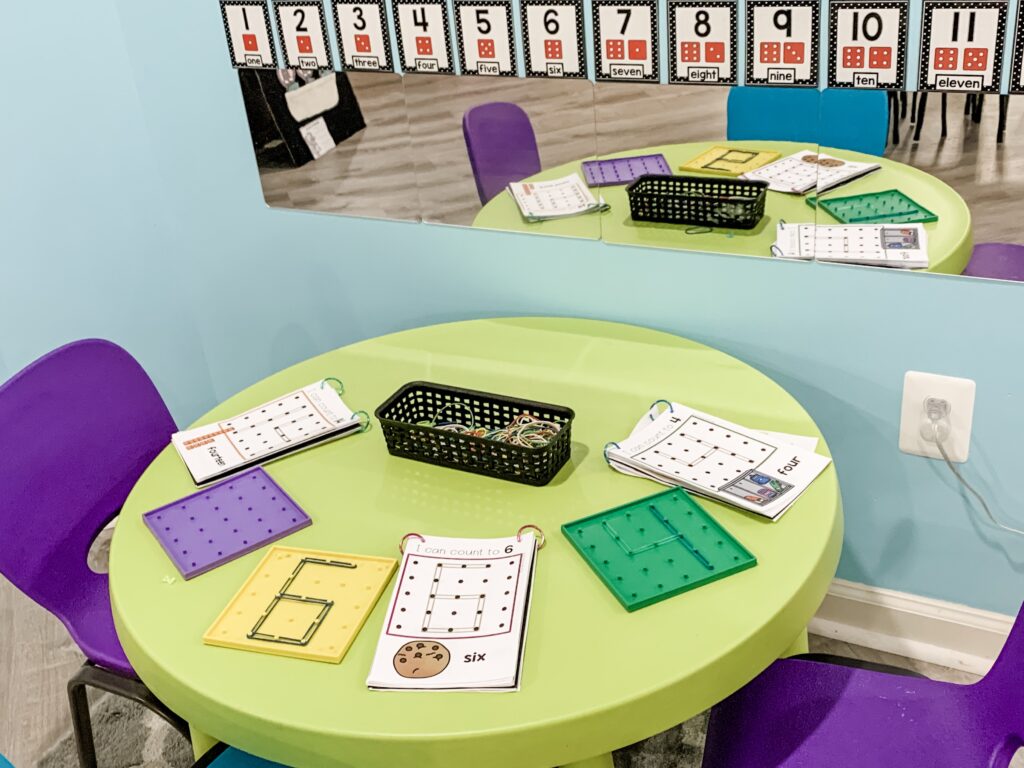
Students can work together or in pairs to create the number on the template.
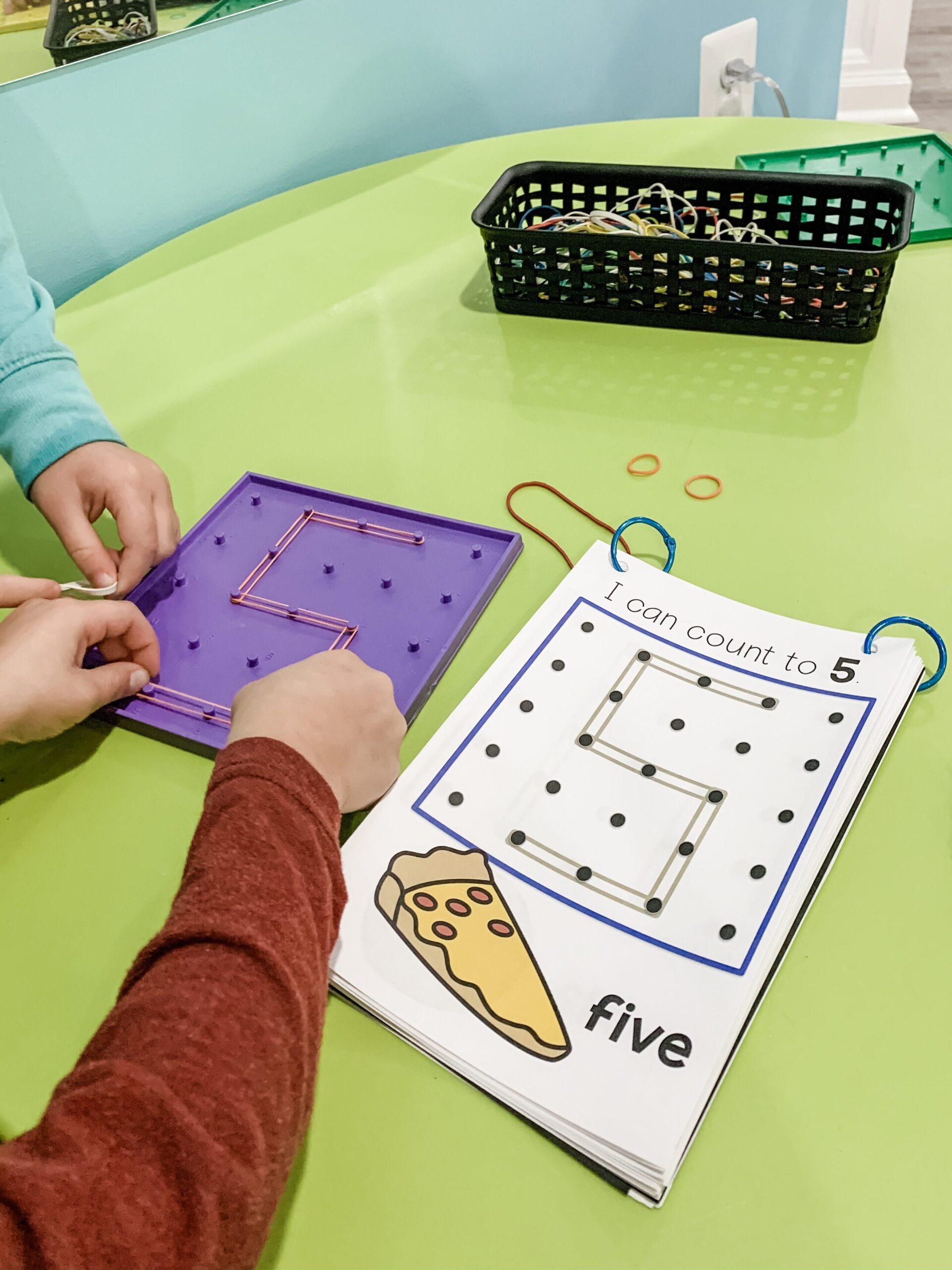
The idea is to have students recognize lines and connect the written number to a specific quantity. Just as in beginning writing, sometimes students transpose or create the numbers backward. This is okay! Take this time as a learning opportunity to speak with students about what they see. Some examples might be:
- “Great job recognizing both numbers that make up 13!”
- “Wow! Nice work! Can you show me what you did?”
Check out this Resource from my Shop!
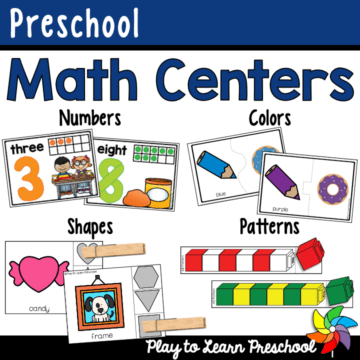
Printable Preschool Math Centers
$12.00Preschool Math Centers include learning about shapes, colors, sorting, patterns, and numbers. This set of 12 centers offers fun, hands-on ways for the youngest students to practice.
While working at the center and having these conversations, students learn that numbers have a proper shape and place on the page, just like letters.
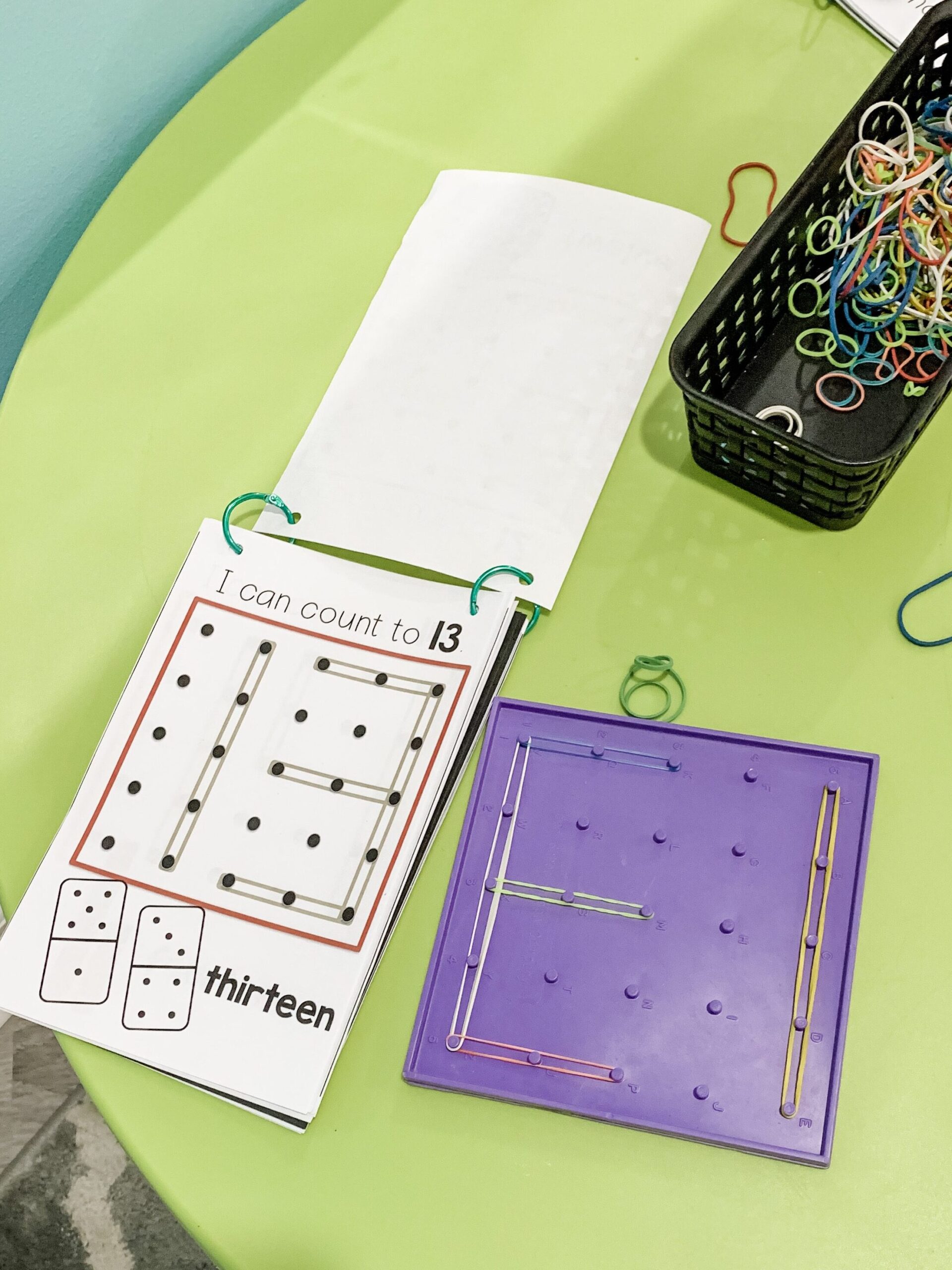
Additional Resources
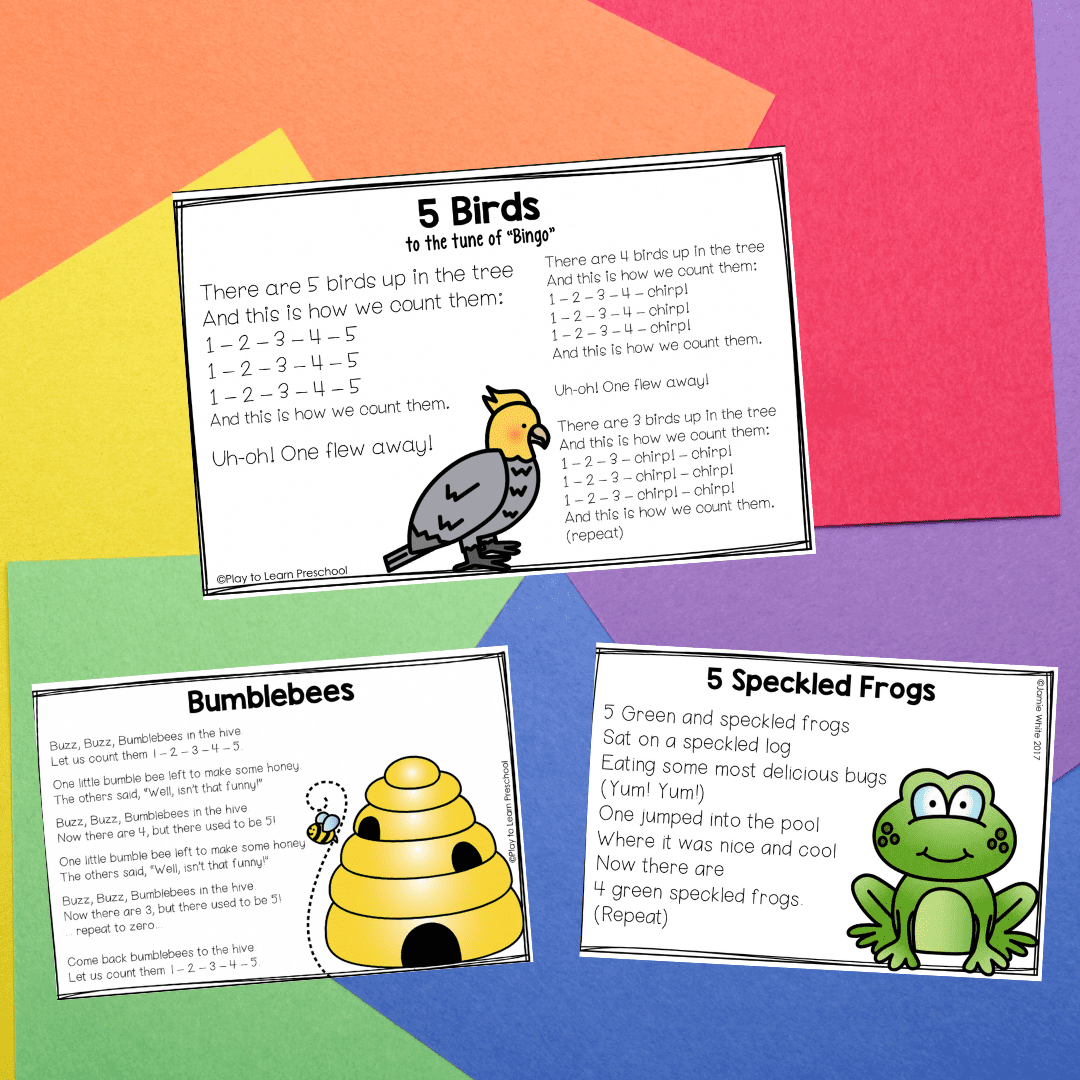
10 FREE Chip Clip Poems!
One of the main goals for preschool math is that students begin to understand computation. When it is presented in a natural, playful way through songs and fingerplays, the concept of computation (making sets by adding and subtracting objects) is both fun and appropriate for preschool students.
After you subscribe, you will be redirected to the FREE Poems. We respect your privacy. Unsubscribe at any time.
- Math needs to be meaningful, but how do you take an abstract concept like numbers and make it tangible – and fun – for young students? Here’s the answer!
- Chip Clip activities are another great way to get students involved and playing with math. Here are some videos of chip clip poems in action!
